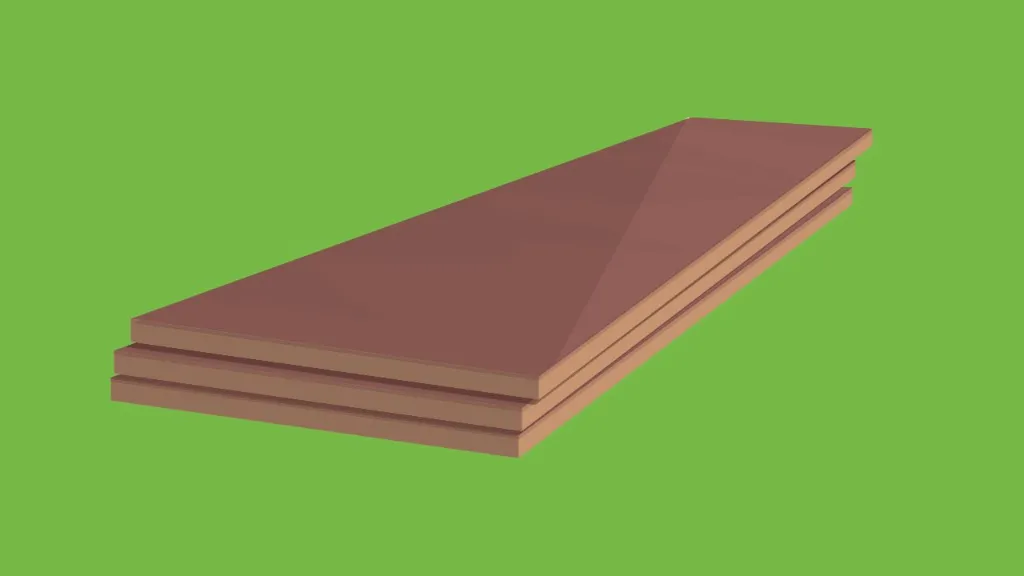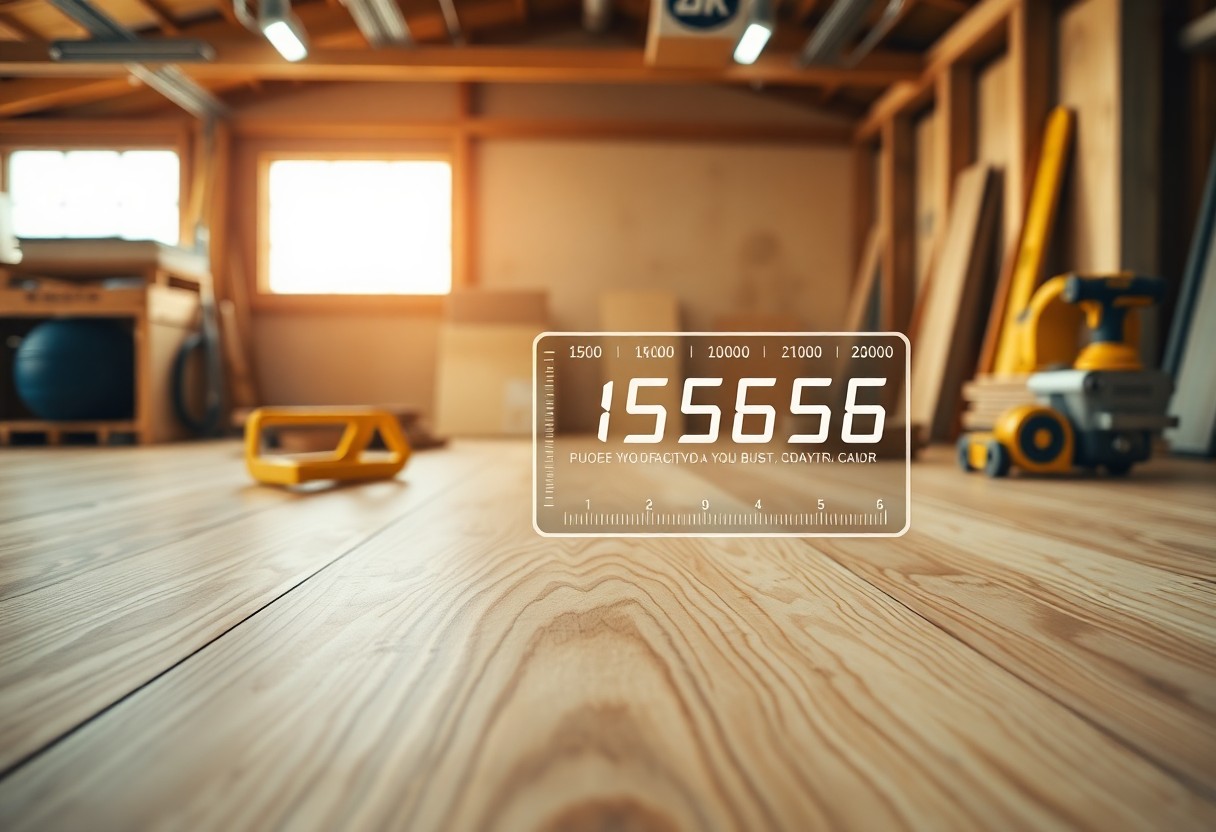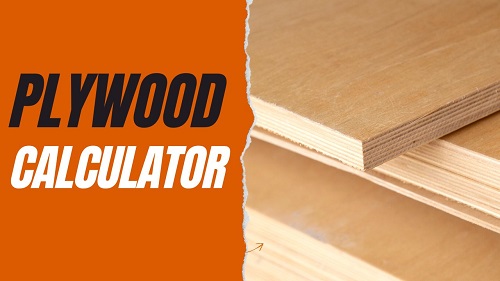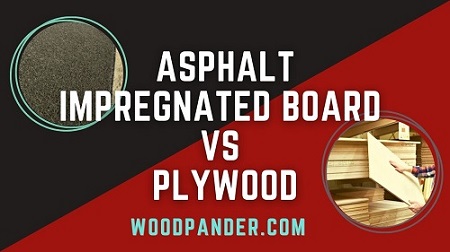Having an uneven plywood subfloor can be a major issue when it comes to installing flooring materials. It can lead to various problems such as unevenness in the finished floor, creaking sounds, and premature wear and tear.
In this article, we will guide you through the process of fixing an uneven plywood subfloor, ensuring a smooth and stable foundation for your flooring. Whether you’re a seasoned DIY enthusiast or a beginner, these step-by-step instructions will help you tackle this project effectively.
To fix an uneven plywood subfloor, you can use self-leveling compound to create a smooth surface, replace damaged plywood sections, or use shims or leveling compounds to raise low spots and even out dips.
How to Fix an Uneven Plywood Subfloor
| Method | Description | Difficulty | Cost | Time Required |
|---|---|---|---|---|
| Self-Leveling Compound | Pouring a self-leveling compound over the subfloor to create a smooth and even surface. | Moderate | $$ | 1-2 days |
| Plywood Patching | Removing damaged or uneven plywood sections and replacing them with new plywood sheets. | Moderate | $$-$$$ | 1-2 days |
| Floor Sanding | Using a floor sander to sand down high spots and create a more even surface. | Difficult | $$-$$$ | 2-3 days |
| Shimming | Placing shims or leveling compounds under the plywood to raise low spots and even out dips. | Easy | $-$$ | 1-2 days |
| Screw Tightening | Identifying loose or squeaky plywood and securing it by driving screws into the subfloor. | Easy | $ | Few hours |
One of our articles –How To Fasten Plywood Together?
Causes of an Uneven Plywood Subfloor
Unevenness in a plywood subfloor can result from various factors. It is crucial to identify the root cause before proceeding with the leveling process. Common causes include:
- Moisture: Excessive moisture can cause plywood to swell and warp, leading to unevenness.
- Improper Installation: Incorrectly installed plywood sheets can result in uneven subflooring.
- Settling: Over time, the subfloor may settle unevenly due to the natural shifting of the building’s foundation or structural changes.
Assessing the Severity of the Problem
The first step in addressing an uneven plywood subfloor is to assess the severity of the problem. Walk across the floor and take note of any noticeable dips, humps, or uneven areas. It’s essential to determine if the irregularities are significant enough to affect the installation of the new flooring.
If the unevenness is minor and doesn’t exceed the manufacturer’s specifications for the chosen flooring material, you may consider leaving it as is or using floor leveling compounds to minimize imperfections.
Tools and Materials Needed
To fix an uneven plywood subfloor, you will need the following tools and materials:
- Tape measure
- Chalk line
- Circular saw
- Pry bar
- Hammer
- Screws
- Screwdriver or drill
- Self-leveling compound
- Trowel
- Plywood sheets
- Belt sander or floor sander
- Floor patch
- Primer
Make sure to gather these items before starting the subfloor leveling process to avoid interruptions and ensure a smooth workflow.
Preparing the Work Area
Before diving into the leveling process, it’s crucial to prepare the work area properly. Clear the room of any furniture, appliances, or other obstacles.
This will provide ample space to work and prevent any accidental damage to belongings. Additionally, ensure proper ventilation and use appropriate safety gear, such as safety glasses and a dust mask, when using power tools.
Leveling Methods
Several methods can be employed to level an uneven plywood subfloor. The choice of method depends on the severity of the unevenness and personal preference. Here are some common techniques:
Method 1- Self-Leveling Compound
Self-leveling compound is a popular choice for moderate to severe subfloor unevenness.
It is a cement-based mixture that flows and settles into low spots, creating a level surface.
Follow the manufacturer’s instructions for mixing and application, and be prepared to work quickly, as the compound dries rapidly.
Method 2- Plywood Shimming
Plywood shimming involves adding additional layers of plywood to raise low spots. Measure the height difference between the lowest point and the desired level, cut plywood strips accordingly, and secure them to the subfloor using screws. Ensure the plywood pieces are level and properly fastened.
Method 3- Sanding High Spots
For minor high spots, sanding can be an effective solution. Use a belt sander or floor sander to gradually remove the excess material until the surface becomes level. Be cautious not to oversand, as this can create new low spots.
Method 4- Filling Low Spots with Floor Patch
Floor patching compound can be used to fill in low spots and create a level subfloor. Apply the compound to the depressed areas and use a trowel to smooth it out. Allow it to dry completely before proceeding.
One of our articles –Asphalt Impregnated Board vs Plywood.
Step-by-Step Guide to Fixing an Uneven Plywood Subfloor

Fixing an uneven plywood subfloor requires careful attention to detail and a systematic approach. Follow this step-by-step guide to achieve a level and stable subfloor:
Step 1- Measure and mark the low and high spots
Begin by assessing the subfloor’s unevenness. Use a tape measure to identify the low and high spots accurately. Mark these areas with a chalk line or any suitable marking tool. This will serve as a visual guide during the leveling process.
Step 2-Choose the leveling method
Based on the severity of the unevenness and the type of flooring you plan to install, choose the appropriate leveling method. Options include self-leveling compound, plywood shimming, sanding, or floor patching. Consider the characteristics of your subfloor and consult with professionals or research the best method for your specific situation.
Step 3-Prepare the self-leveling compound or cut plywood strips
If you opt for self-leveling compound, carefully read and follow the manufacturer’s instructions for mixing and application.
Gather the necessary tools, such as a trowel, bucket, and mixing paddle. If plywood shimming is the chosen method, measure and cut plywood strips to the required dimensions.
Step 4-Apply the self-leveling compound or install plywood shims
If using self-leveling compound, start by applying it to the low spots of the subfloor. Pour the compound onto the subfloor and use a trowel to spread it evenly, working quickly as the compound dries rapidly.
If using plywood shimming, place the plywood strips over the low spots, ensuring they are level and properly aligned with the surrounding subfloor. Secure the plywood strips with screws.
Step 5-Check for levelness
Use a straight edge or level to check the surface’s evenness. Place the straight edge or level across the subfloor, spanning the marked areas.
Adjust the compound or plywood shims as needed to achieve a level subfloor. Take your time with this step to ensure accuracy and precision.
Step 6-Allow the compound or adhesive to dry
Follow the manufacturer’s instructions regarding the drying time for the self-leveling compound.
It typically takes a few hours to dry, but this can vary based on the product and environmental conditions. Avoid stepping on the compound or disturbing the shims during this drying period to ensure optimal results.
Step 7-Sand down any high spots
After the compound is dry, check for any remaining high spots on the subfloor.
Use a belt sander or floor sander with a coarse-grit sandpaper to carefully sand down these areas.
Start with gentle pressure and gradually increase as needed. Sand in the direction of the wood grain, if applicable, to achieve a smooth and even surface.
Step 8-Fill in low spots with floor patching compound
If there are any remaining low spots after the leveling process, fill them in with floor patching compound. Apply the compound to the depressed areas and use a trowel to spread it evenly.
Follow the manufacturer’s instructions for drying time and any additional steps required for a seamless finish.
Step 9-Sand the patched areas
Once the floor patching compound is completely dry, sand the patched areas using a fine-grit sandpaper. This step ensures a seamless transition between the patched spots and the rest of the subfloor, providing a level surface for the new flooring.
Step 10-Clean the subfloor
Thoroughly vacuum or sweep the subfloor to remove any dust, debris, or loose particles. A clean subfloor will enhance the adhesion and longevity of the new flooring.
By following these step-by-step instructions, you can effectively fix an uneven plywood subfloor, providing a stable and level foundation for your upcoming flooring project.
Remember to measure accurately, choose the appropriate leveling method, and use the necessary tools and materials. Take your time, pay attention to details, and consult professionals if needed to ensure optimal results.
Finishing and Smoothing the Subfloor
Once you have successfully leveled the plywood subfloor, it’s essential to finish and smooth the surface before proceeding with the installation of your chosen flooring material. Follow these steps to ensure a professional and seamless result:
Sanding:
Use a floor sander or belt sander with a fine-grit sandpaper to sand the entire subfloor.
This step helps to smooth out any remaining imperfections and provides a consistent surface for the flooring installation. Take care to sand in the direction of the wood grain, if applicable.
Vacuuming and Cleaning:
Thoroughly vacuum the subfloor to remove any sanding dust and debris. Use a damp cloth or mop to wipe the surface and ensure it is clean and free of any loose particles.
Priming:
Applying a primer to the leveled subfloor is recommended, especially if you plan to install a type of flooring that requires a good adhesive bond.
The primer promotes adhesion, improves durability, and helps to prevent moisture-related issues. Follow the manufacturer’s instructions for the specific primer you choose, and allow it to dry completely before proceeding.
Precautions and Tips for a Successful Subfloor Leveling Project
While fixing an uneven plywood subfloor is a manageable task, it’s crucial to keep some precautions and tips in mind to ensure a successful outcome:
Proper Subfloor Assessment:
Before starting the leveling process, accurately assess the subfloor’s unevenness and determine if it falls within the acceptable tolerances for your chosen flooring material. Consult the manufacturer’s guidelines and specifications to avoid potential issues down the line.
Moisture Considerations:
Moisture-related problems can significantly affect the performance of both the subfloor and the new flooring. Ensure the subfloor is dry before leveling, and address any underlying moisture issues to prevent future complications.
Precision and Accuracy:
Take your time during the leveling process to ensure precision and accuracy. Use the appropriate tools, follow the instructions meticulously, and double-check the levelness of the subfloor at each stage.
Proper Ventilation:
When working with self-leveling compounds, ensure adequate ventilation in the room to allow for proper curing. Open windows, use fans, or consider working in well-ventilated areas to facilitate the drying process.
Safety Gear:
Wear appropriate safety gear, such as safety glasses, a dust mask, and gloves, when using power tools or working with leveling compounds and adhesives. Protecting yourself is essential for a safe and successful project.
Common Mistakes to Avoid
While tackling the task of fixing an uneven plywood subfloor, it’s important to be aware of common mistakes that can compromise the final result. Avoid the following pitfalls to ensure a smooth and successful subfloor leveling project:
Insufficient Preparation:
Neglecting to prepare the subfloor adequately can lead to unsatisfactory leveling results. Take the time to clear the room, remove obstacles, and ensure a clean and dust-free work area.
Skipping Subfloor Assessment:
Failing to assess the subfloor’s condition and accurately measure the unevenness can result in improper leveling. Measure carefully, identify the low and high spots, and plan your leveling method accordingly.
Rushing the Self-Leveling Compound Application:
When using self-leveling compound, it’s crucial to work quickly but accurately. Read and follow the manufacturer’s instructions for mixing, pouring, and spreading the compound to achieve the desired levelness.
Overlooking Drying Time:
Patience is key when working with leveling compounds, adhesives, or floor patching materials. Allow sufficient time for drying and curing before proceeding with subsequent steps or installing the new flooring.
Ignoring Manufacturer Guidelines:
Each flooring material and leveling product may have specific guidelines and recommendations. Failing to follow these instructions can lead to installation issues, warranty voids, or premature flooring failures. Always refer to the manufacturer’s guidelines for best results.
Hiring Professionals vs. DIY Approach
Deciding whether to hire professionals or take the DIY approach for leveling an uneven plywood subfloor depends on various factors, including your skill level, time availability, and the extent of the unevenness. Consider the following:
DIY Approach:
If you have experience with home improvement projects, access to the necessary tools, and the time to commit to the task, fixing an uneven plywood subfloor can be a rewarding and cost-effective DIY project.
However, ensure that you have a good understanding of the leveling techniques and follow the outlined steps carefully.
Professional Help:
For severe unevenness or if you lack the necessary skills, it may be wise to hire professionals.
Experienced flooring contractors can assess the subfloor accurately, employ specialized equipment, and provide expertise to ensure a level and stable result. They also have access to a wider range of leveling materials and can complete the project efficiently.
Consider your abilities, available resources, and the complexity of the subfloor leveling project before making a decision. Remember that hiring professionals can provide peace of mind and guarantee high-quality results.
Related Questions
Q: How long does it take to level an uneven plywood subfloor?
A: The time required to level a subfloor depends on various factors, such as the severity of the unevenness, the chosen leveling method, and the drying time of the materials used. It can range from a few hours to several days.
Q: Can I level a plywood subfloor myself?
A: Yes, leveling a plywood subfloor can be a DIY project if you have the necessary skills, tools, and time. However, it’s important to accurately assess the unevenness and follow the recommended leveling methods carefully.
Q: How much does it cost to level an uneven subfloor?
A: The cost of leveling an uneven subfloor can vary depending on the chosen method, the extent of the unevenness, and whether you hire professionals or do it yourself. It’s best to obtain estimates from flooring contractors or suppliers for a more accurate cost assessment.
Q: Can I install flooring directly on a leveled subfloor?
A: Yes, once the subfloor is properly leveled and prepared, you can proceed with the installation of your chosen flooring material following the manufacturer’s guidelines and recommendations.
Q: Can I level a plywood subfloor without using self-leveling compound?
A: Yes, self-leveling compound is just one of the methods to level a subfloor. Plywood shimming, sanding, or floor patching are alternative techniques depending on the situation and preference.
Q: How do I determine the tolerances for my chosen flooring material?
A: The tolerances for your chosen flooring material can usually be found in the manufacturer’s guidelines or specifications. They provide recommendations regarding the acceptable levels of subfloor evenness for a successful installation.
Q: What if my subfloor has excessive moisture?
A: If your subfloor has excessive moisture, it is important to address the moisture issue before leveling. Moisture can compromise the leveling materials and cause future problems. Consult with professionals or take appropriate measures to mitigate moisture-related issues.
Q: Can I level a subfloor with multiple layers of plywood?
A: Yes, if the subfloor requires additional leveling, you can add multiple layers of plywood to the low spots. Secure the plywood layers properly to ensure a stable and level subfloor surface.
Conclusion
Fixing an uneven plywood subfloor is a crucial step in ensuring a durable and aesthetically pleasing flooring installation.
By following the steps outlined in this guide, you can tackle this task with confidence.
Remember to prioritize safety, take accurate measurements, and invest time in proper preparation to achieve the best results.





![1/2 vs 3/4 Plywood for Cabinets [Unlimited Guide] 12 vs 34 Plywood for Cabinets](https://woodpander.com/wp-content/uploads/2023/11/12-vs-34-Plywood-for-Cabinets.jpg)


